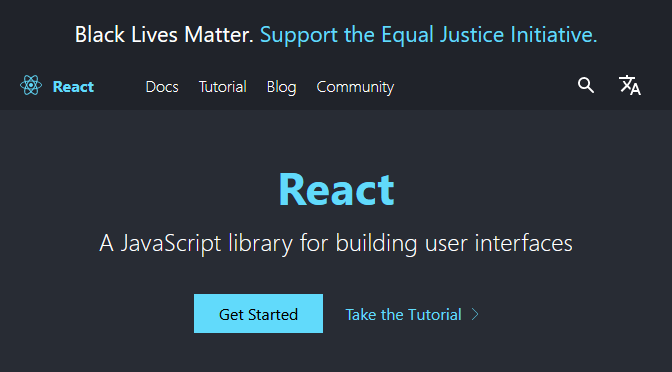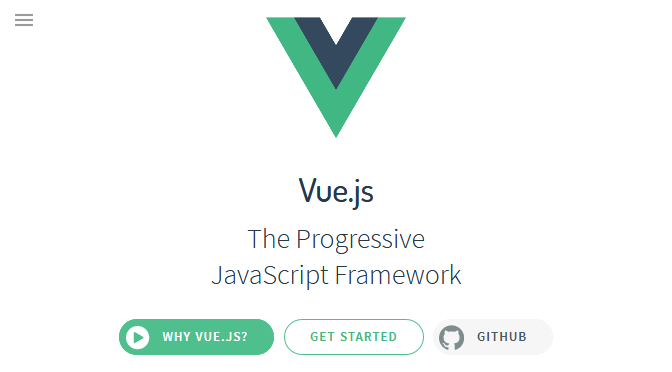The Front-end technology stack entails engineering what end-users will see. This implies that the primary focus should be offering convenience by having an impressive UX design. Tech stacks act as the tools used to design these elements of the front end.
However, the tech stack is not the same. They vary in cost and functionality. In this post, We will highlight the top 3 tech stacks startups can consider for your web projects.
1. Angular

Website: https://angular.io/
Angular was first introduced in web development by Google in 2009 and has since gained popularity and acceptance among developers. This front-end framework has undergone substantive evolution over the years (with the latest version released in February 2020) and today, has gained preference by more than 44% of front end developers.
Several factors contribute to its wide application in the market, other than it being open-source. This stack allows developers to create dynamic and interactive applications, thanks to the composite of features it comes with like two-way binding, dependency injection, AJAX handling, RESTful API handling, templating and modularization. Another impressive attribute of Angular is that you do not need third-party libraries to create a dynamic application.
Some of the top advantages of Angular include:
- The functionality is very impressive. As stated, it has eliminated the need for third-party libraries. With the official library, you get all the tools you would need for a fully functional app.
- Google supports it and that is a huge plus. This means it has long-term support and the Angular ecosystem is continually being scaled up. This also speaks to the stability of the framework.
- The inbuilt TypeScript language, which is a superscript for JavaScript, is every developer’s dream. The improved refactoring, auto compilation and navigation services make debugging and maintaining large codebases easier.
- The Modular structure of organizing code into buckets makes it easy to break code into manageable components, which can be divided across teams and re-used. It is also worth mentioning the associated ease of testing.
2. ReactJS

Website: https://reactjs.org/
React is an open-source JavaScript library developed by Facebook in 2013. It comes with JSX and Virtual DOM as the main features. The JavaScript eXtension (JSX) allows developers to use simple HTML Style code to modify DOM. The overall result is improved development efficiency and overall site performance. It also helps to note that JSX is compatible with all browsers.
Virtual DOM is a copy of a site’s DOM. When JSX is used to update DOM, Virtual DOM is created to help point out the parts on the DOM that need changing. This helps reduce computing power and loading time for a website.
The main advantages of ReactJS include:
- This framework is relatively simple and easy for developers to learn. Developers should find it quite easy to work with ReactJS.
- The reusability of components allows for progressive development. Every component comes with its unique logic and controls, thus easier to develop, maintain and re-use.
- The Virtual DOM is perhaps its coolest feature. It makes it easier to identify the changes that need to be made on the actual DOM and even suggest the most effective ways to apply these changes.
- Has a relatively broad ecosystem, which means it is easy to access materials and support on the framework.
3. VueJS

Website: https://vuejs.org/
VueJS has also gained some massive traction among developers over the years. Since its inception in 2013, it is only second to React in popularity. VueJS offers a multiplicity of features and overall impressive performance. The gentle learning curve is impressive, but there is more.
VueJS’s development environment is modular and flexible. Developers can re-use code thanks to the loosely coupled single-file components, thus shortening development time. Further, it is easy to sort through the code base since all the data are stored in the .vue file.
Other pros of this framework include:
- VueJS has a rich ecosystem with a wide collection of tools and libraries for an amplified coding experience.
- An inbuilt reactivity mechanism automatically refreshes the user interface, thus minimizing lines of code and development time.
- The VueJS community is large and continues to grow. Developers are guaranteed access to support and continued contribution to the framework.
Conclusion
While the many JavaScript frameworks and libraries can make it a challenge to settle for the best, these rank at the top of tech stacks startups can consider. Other than offering impeccable performance, they have gained the admiration and approval of the developers’ community, thus worthy considerations for startups that come with guaranteed optimal performance.



